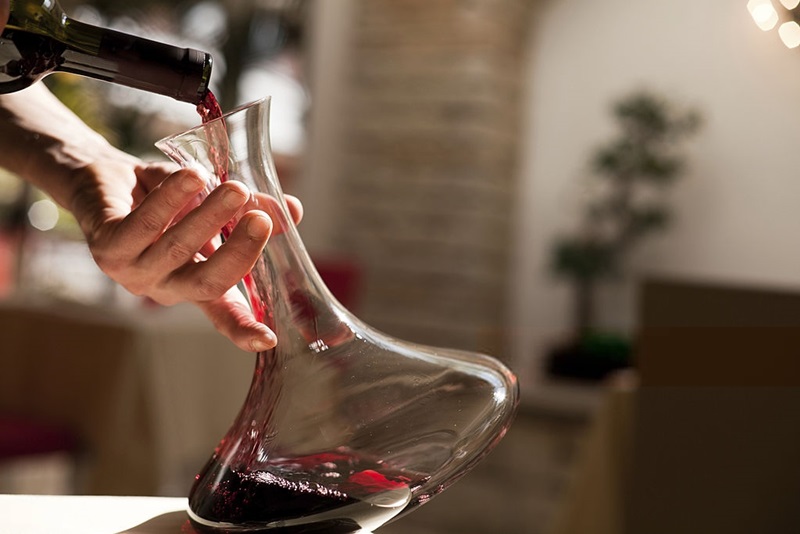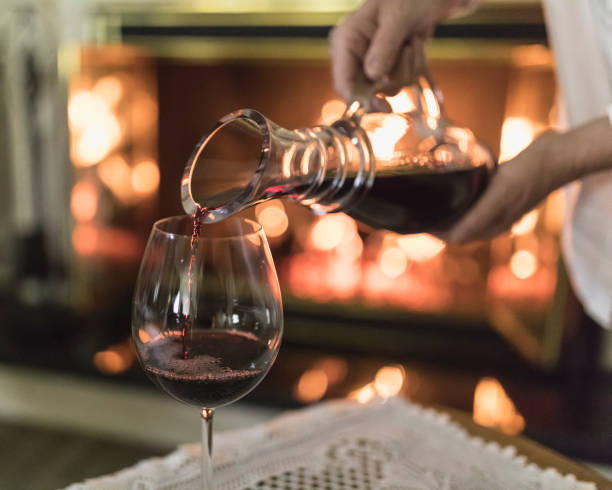Wine decantation: rules, techniques, and benefits
A comprehensive guide to enhancing your wine experience

Wine, a beverage often equated with a living entity, undergoes a remarkable journey from its birth in vineyards to its maturation in barrels and bottles. This journey, however, can lead to the development of certain peculiarities within the wine, which can ultimately affect the tasting experience. One traditional practice to enhance the wine's character and remove any unwanted elements is decantation. This article delves into the art of decanting wine, outlining its necessity, techniques, and benefits.
Decantation serves two primary purposes in wine service. First, it helps in the removal of sediments often found in older wines. These sediments, while not harmful, can detract from the overall tasting experience. Second, decantation facilitates the aeration of wines, particularly those that are very tannic or robust. This process allows the wine to "breathe," enhancing its flavors and softening its edges.
Decanting is more than merely transferring wine from a bottle to a decanter. It requires a technique that ensures the preservation of the wine's quality, especially when dealing with older vintages. The key is to reintroduce oxygen carefully, revitalizing the wine without overwhelming it. In essence, decanting cures the wine of its "slight illness" caused by a lack of oxygen.
Historically, wine connoisseurs believed that simply uncorking a bottle would suffice to aerate the wine. However, contemporary studies have shown that the aeration through the bottle's neck is minimal and inefficient. Thus, the practice of decantation has gained prominence for its substantial improvement in the wine's taste.
Decanters, typically glass vessels with a long neck and a wide base, are central to the process. Despite variations in designs, all decanters fulfill their purpose of effectively reintroducing oxygen to the wine. Pouring the wine gently against the decanter's walls maximizes air contact, enhancing the aeration process.
Basic 10 Rules of Decanting
- Assess the wine's condition through smell and taste before decanting.
- Pour gently, ensuring maximum contact with air.
- Observe the color and presence of sediments, possibly using a light source for clarity.
- Let the wine rest in the decanter after pouring.
- Decant wines that have aged over a year to improve their quality.
- The duration in the decanter varies based on the wine's age; tasting periodically is advisable.
- Gentle swirling can aid in aeration, especially for younger wines.
- Decant close to serving time to prevent overexposure to oxygen.
- Observe the rejuvenation of the wine post-decanting.
- Choose a high-quality, elegantly designed decanter for the best experience.
The Jar Method

Contrasting the formal decantation is the jar, a less refined method of aerating wine. This technique involves pouring wine into a decanter or jug from a height, allowing for a more aggressive aeration. It is particularly useful for young wines needing rapid oxygenation to eliminate sulfur-like aromas.
Decanting is an integral part of wine service, enhancing the beverage's inherent qualities and ensuring a superior tasting experience. Whether through traditional decantation or the jarreado method, the key lies in understanding the wine's needs and responding with the appropriate technique.
Founded in 2007, Vinetur® is a registered trademark of VGSC S.L. with a long history in the wine industry.
VGSC, S.L. with VAT number B70255591 is a spanish company legally registered in the Commercial Register of the city of Santiago de Compostela, with registration number: Bulletin 181, Reference 356049 in Volume 13, Page 107, Section 6, Sheet 45028, Entry 2.
Email: [email protected]
Headquarters and offices located in Vilagarcia de Arousa, Spain.